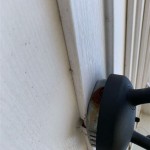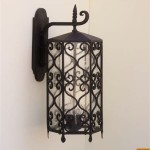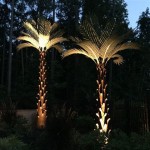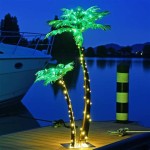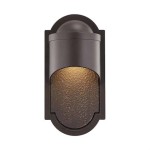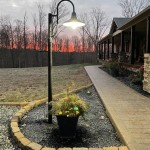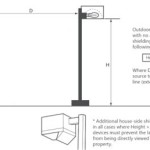Battery Operated Outdoor Motion Sensor Lights: A Comprehensive Guide
Battery operated outdoor motion sensor lights offer a convenient and flexible solution for illuminating outdoor spaces without the need for complex wiring. These lights are particularly useful in areas where electrical access is limited or where running wires would be cost-prohibitive. This article delves into the multifaceted aspects of battery-operated outdoor motion sensor lights, examining their features, benefits, factors to consider when selecting one, installation procedures, maintenance tips, and common issues encountered.
Understanding the Core Components and Functionality
Battery-operated outdoor motion sensor lights are comprised primarily of these key components: a light source (typically LEDs), a motion sensor, a battery compartment, and a housing to protect the internal components from the elements. The light source emits illumination, the motion sensor detects movement within a predefined range, the battery compartment houses the power source, and the housing ensures durability and weather resistance.
The motion sensor, often employing Passive Infrared (PIR) technology, detects changes in infrared radiation emitted by warm objects, such as humans or animals. When motion is detected within the sensor's field of view, it triggers the light to activate. The duration of illumination is typically adjustable, allowing users to set the light to remain on for a specific period after motion ceases. This feature conserves battery life while providing adequate illumination when needed.
The light source is usually LEDs, known for their energy efficiency, long lifespan, and bright illumination. Compared to traditional incandescent or halogen bulbs, LEDs consume significantly less power, extending the battery life of the light. LED efficacy is measured in lumens per watt, with higher values indicating greater energy efficiency. Color temperature, measured in Kelvin (K), influences the light's appearance, ranging from warm white (around 2700K) to cool white (around 5000K) or daylight (around 6500K).
The battery compartment houses the batteries that power the light. Some lights use standard AA, AAA, C, or D batteries, while others utilize rechargeable lithium-ion batteries. Rechargeable batteries offer a more sustainable and cost-effective option in the long run, albeit with a higher initial investment. Battery capacity is typically measured in milliampere-hours (mAh), with higher values indicating longer run times between charges or replacements.
The housing protects the internal components from environmental factors such as rain, snow, dust, and UV radiation. Materials used in the housing typically include durable plastics, metals, or a combination thereof. A weatherproof rating, such as IP65 or IP66, indicates the level of protection against water and dust ingress. A higher IP rating signifies greater protection. UV-resistant coatings help prevent the plastic from degrading or yellowing over time due to sunlight exposure.
Key Benefits of Battery Operated Motion Sensor Lights
These lights offer a range of advantages that make them an attractive lighting solution for various outdoor applications. These advantages include ease of installation, flexibility in placement, enhanced security, and energy efficiency.
Ease of installation is a primary benefit. Since these lights operate on batteries, there is no need to run electrical wiring or hire an electrician. This makes them an ideal DIY project for homeowners. Installation typically involves mounting the light to a wall, fence, or post using screws or adhesive tape. Detailed instructions are usually provided with the light.
Placement flexibility is another significant advantage. These lights can be installed virtually anywhere outdoors, regardless of the availability of electrical outlets. This is particularly useful for illuminating areas such as sheds, garages, driveways, walkways, gardens, and decks, where traditional lighting solutions may be impractical or expensive to implement. The portability of battery-operated lights also allows for easy relocation as needed.
Enhanced security is provided by motion-activated illumination, which can deter potential intruders. The sudden burst of light can startle individuals approaching the property, discouraging them from entering. Motion sensor lights also illuminate pathways and entrances, improving visibility and reducing the risk of accidents. Some lights feature adjustable sensitivity settings, allowing users to customize the detection range and minimize false alarms triggered by small animals or plants.
Energy efficiency is a hallmark of LED technology, which is commonly used in these lights. LEDs consume significantly less power than traditional light sources, extending battery life and reducing energy costs. The motion sensor further enhances energy efficiency by activating the light only when needed, rather than leaving it on continuously. This combination of LED technology and motion sensing contributes to a more sustainable and cost-effective lighting solution.
Factors to Consider When Choosing a Battery Operated Motion Sensor Light
Selecting the right battery operated outdoor motion sensor light requires considering several factors to ensure it meets specific needs and preferences. These factors include battery type and capacity, motion sensor range and sensitivity, light output, weather resistance, and mounting options.
Battery type and capacity are crucial considerations. The battery type affects the light's performance, lifespan, and cost. Rechargeable batteries, such as lithium-ion, offer a longer lifespan and are more environmentally friendly but require an initial investment in batteries and a charger. Standard alkaline batteries are readily available and relatively inexpensive but need to be replaced more frequently. Battery capacity, measured in mAh, determines how long the light can operate between charges or replacements. A higher mAh rating translates to longer run times.
Motion sensor range and sensitivity determine the area covered by the motion sensor and its ability to detect movement. A wider detection range allows the light to be triggered from a greater distance. Sensitivity settings allow users to adjust the sensor's responsiveness to movement, minimizing false alarms triggered by small animals or swaying plants. Some lights offer adjustable detection angles, allowing users to customize the area monitored by the sensor.
Light output, measured in lumens, indicates the brightness of the light. The required light output depends on the size and purpose of the illuminated area. For small areas such as walkways or doorways, a lower lumen output may suffice. For larger areas such as driveways or gardens, a higher lumen output is recommended. Color temperature, measured in Kelvin (K), affects the light's appearance. Warm white light (around 2700K) provides a cozy and inviting ambiance, while cool white light (around 5000K) or daylight (around 6500K) offers brighter and more focused illumination.
Weather resistance is essential for outdoor lights. The housing should be made of durable materials that can withstand exposure to rain, snow, dust, and UV radiation. A weatherproof rating, such as IP65 or IP66, indicates the level of protection against water and dust ingress. A higher IP rating signifies greater protection. UV-resistant coatings help prevent the plastic from degrading or yellowing over time due to sunlight exposure.
Mounting options influence the ease and flexibility of installation. Some lights can be mounted to a wall, fence, or post using screws or adhesive tape. Others feature adjustable mounting brackets that allow users to direct the light beam in the desired direction. The mounting hardware should be durable and weather-resistant to ensure secure and long-lasting installation. Consider the weight of the light and the mounting surface when selecting the appropriate mounting hardware.
Installation and Maintenance Procedures
Proper installation and regular maintenance are vital to ensure the optimal performance and longevity of battery operated outdoor motion sensor lights. Installation typically involves mounting the light, inserting batteries, and adjusting the sensor settings. Maintenance includes cleaning the light, replacing batteries, and checking for any signs of damage.
Mounting the light involves selecting a suitable location and securing the light to a wall, fence, or post using screws or adhesive tape. Ensure the mounting surface is clean, dry, and sturdy enough to support the weight of the light. Follow the manufacturer's instructions for proper installation. Consider the desired detection range and light coverage when choosing the mounting location.
Inserting batteries requires opening the battery compartment and inserting the batteries according to the polarity markings (+ and -). Use the correct type and size of batteries recommended by the manufacturer. If using rechargeable batteries, fully charge them before first use. Ensure the battery compartment is securely closed to prevent water ingress.
Adjusting the sensor settings involves setting the detection range, sensitivity, and illumination duration. The detection range determines the distance at which the sensor will detect motion. Sensitivity settings adjust the sensor's responsiveness to movement. Illumination duration sets the length of time the light will remain on after motion ceases. Experiment with different settings to find the optimal configuration for the specific location and needs.
Cleaning the light involves wiping the housing and lens with a soft, damp cloth to remove dust and dirt. Avoid using harsh chemicals or abrasive cleaners, as they can damage the finish. Regularly inspect the light for any signs of damage, such as cracks or leaks. Repair or replace any damaged components as needed.
Replacing batteries is necessary when the light output diminishes or the motion sensor becomes less responsive. The frequency of battery replacement depends on the battery type, battery capacity, and usage patterns. When replacing batteries, use the correct type and size recommended by the manufacturer. Properly dispose of used batteries according to local regulations.
Troubleshooting Common Issues
Despite their relative simplicity, battery-operated outdoor motion sensor lights can encounter issues. Common problems include the light not turning on, the light turning on and off repeatedly, diminished light output, and short battery life. Understanding the potential causes and solutions to these issues can resolve these problems efficiently.
If the light does not turn on, it is important to first check the batteries. Ensure they are properly installed with the correct polarity and have sufficient charge. If the batteries are dead, replace them with fresh ones. If the light still does not turn on, check the switch or power button to ensure it is in the "on" position. If the switch is faulty, it may need to be replaced. Examine the wiring connections inside the light housing for any loose or corroded connections. Clean or repair any faulty wiring.
If the light turns on and off repeatedly, it may be due to a faulty motion sensor or environmental factors triggering the sensor. Adjust the sensitivity settings to reduce the likelihood of false alarms. Ensure there are no obstructions, such as plants or trees, that are triggering the sensor. Consider relocating the light to a different location where it is less prone to false alarms. Check the light for any signs of water damage, which can cause the motion sensor to malfunction.
Diminished light output can indicate that the batteries are running low or that the LED bulb is nearing the end of its lifespan. Replace the batteries with fresh ones. If the light output remains dim, replace the LED bulb, if possible. Some lights have integrated LEDs that cannot be replaced. In this case, the entire light may need to be replaced. Clean the lens to remove any dirt or debris that may be obstructing the light. Ensure the lens is securely attached to the housing.
Short battery life may be caused by frequent activation of the motion sensor, low-quality batteries, or extreme temperatures. Reduce the sensitivity of the motion sensor to minimize false alarms. Use high-quality batteries with a higher mAh rating. Avoid using the light in extreme temperatures, as this can reduce battery life. Consider using rechargeable batteries, which can be recharged multiple times, reducing the need for frequent battery replacements.

Battery Powered Motion Sensor Led Outdoor Lights Set Of 2 64r86 Lamps Plus

360 Battery Operated Indoor Outdoor Night Light Garden Motion Sensor Security Led Lamp Com

360 Battery Operated Indoor Outdoor Garden Motion Sensor Security Led Light

360 Battery Operated Indoor Outdoor Night Light Garden Motion Sensor Security Led Lamp Com

Battery Powered Motion Sensor Led Outdoor Lights Set Of 2 64r86 Lamps Plus

Mr Beams Indoor Outdoor Battery Powered Motion Activated 20 Lumen Led Stick Anywhere Light 3 Pack Mb723 The Home Depot

Festive Lights Outdoor Security Pir Motion Sensor Led Welcome Wall Light Battery Operated

2 Head Battery Operated Motion Flood Light With Timer

Sensor Night Wall Light Battery Powered Motion Lights Wireless 9 Leds Spotlight Indoor And Outdoor Garden Security Led Lamp Auto On Off Porch For

Lepower Battery Powered Led Flood Light Outdoor 1500 Lm 5000 K Ip65 Waterproof Wireless Operated 3 Head Motion Detector For Garage Yard Porch Black Com
Related Posts
